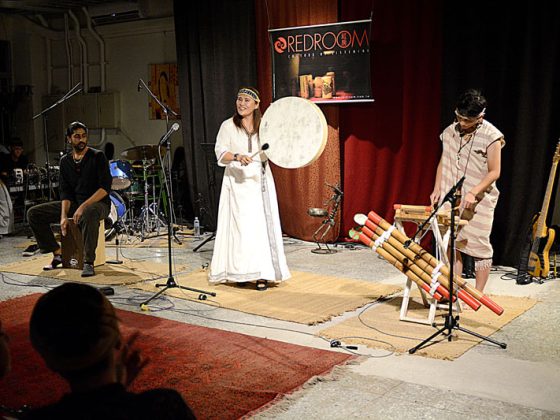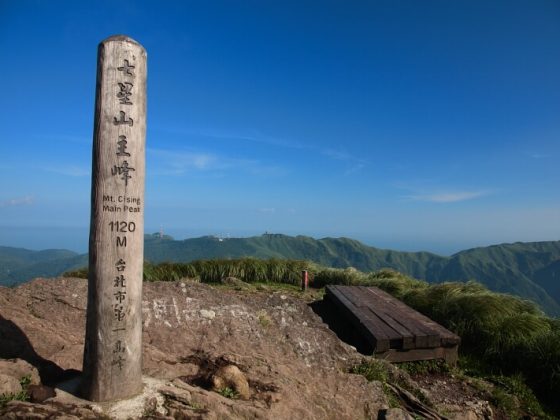It’s Mid-September and the unusually oppressive heat of summer is fading at last, replaced by the rich, windy weather (and occasional typhoon) for which Taiwan autumns are known. As a cyclist, it’s my favorite time of the year, and this week’s column would probably be about my upcoming weekend cycling plans, if I’d not been sidetracked by an experience I had in Tainan on Monday, delivering a keynote address on the subject of “Branding Taiwan’s Cities”.
In typical Friday Column tradition (and in keeping with Lao Tzu’s maxim on travel), I may take a winding route to reach the destination.
Before coming on board with MyTaiwanTour I worked as a travel writer, both for travel-guide giant Lonely Planet and several dozen other smaller publications, periodicals and travel websites. Though my work brought me to many places around the world (Taiwan, Singapore, Malaysia, Belize and all over China, just to name a few), my specialty has generally been writing about urban areas. I have an affinity for cities, and have always said that given 72 hours in any city I can gather enough information to be able to offer sound advice to any first-time traveler.
My usual method for getting to know a city is as follows: Before leaving, I do some basic research on the city I’m about to visit. Local history, must-see sights, signature dishes, that sort of thing. Once I hit the ground, I forget 90% of this and get myself purposely lost for as many hours as possible. This is in line not just with Lao Tzu’s maxim about having no fixed goals, but also with that of American writer Lawrence Block, who writes, “Our happiest moments as tourists always seem to come when we stumble upon one thing while in pursuit of something else.”
Lawrence Block is from from New York City, and so am I. Which is as good a segue as any to the subject of City Branding.
If I were to walk into a crowded elevator anywhere in the English speaking world singing
Start Spreading the news…
I’m leaving today…
I wanna be a part of it…
And then point to someone at random, chances are better than average that they’d respond
New York, New York!
NYC is easily the most well-branded city on the planet. Barely a day goes by in Taiwan where I don’t run into at least a couple of people advertising some aspect of my hometown on their clothing, whether it’s a T-shirt bearing the letters NYC, some variation of the city’s iconic skyline, or just the NY Yankees Logo. I’ve had farmers in rural China ask me where I’m from, and when I’ve answered Niǔyuē (New York), they’ve given me the thumbs up and responded Dà píngguǒ! (The Big Apple!)
Not surprisingly, New York City has consistently been one of the world’s top ten most visited cities for decades. While I gave up NYC residency about the same time I came legally of age, I’ve never given up my identity as a New Yorker (or the distinctive accent).

So, finding myself among esteemed company as one of two keynote speakers at a seminar put on by the Dream Travel Taiwan Alliance (the overarching purpose of which was to share and discuss best practices in international destination marketing and the latest trends in the global tourism industry, specifically as applied to cities looking to develop their own marketability as tourist destinations), I began by speaking about the success that New York has had in branding itself.
I specifically started with New York, despite the fact that I realize the impossibility of any other city replicating NYC’s formula for success. NYC has so many icons (Times Square, The Statue of Liberty, The Empire State Building, a globally-known song called New York, New York, for god’s sake) that it would be impossible for any city lacking these things to ever be as successful at branding itself as a tourist destination.
Or is it?
First, everything that Singapore does well, it does really well. Great food, great transportation, great nightlife and cool, safe neighborhoods in which to wander. If you’re going to Singapore for those four things, you’re going to have an excellent time. Singapore has fine museums and good shopping, but these are not the things that primarily draw people to visit Singapore. It’s the food, convenience, nightlife and “safely exotic” vibe that brings visitors in by the millions.
Second, and as importantly, Singapore knows how to get the message out about what it does offer. If I were to walk into any elevator in the world and ask random strangers (in their language of course) about Singapore, chances are better than average that they’d respond with some variation of “Great food, safe, clean and easy to get around.” (I doubt the Merlion would even come up.)
I’m of the opinion that, like in the case of Singapore, iconography will not be the most important part in the success of getting the message out about what Taiwan’s cities have to offer travelers. True, Taipei has done pretty well for itself with Taipei 101 (which kind of serves double duty as overall branding icon for Taiwan), but I don’t believe that people visit Taipei specifically to visit Taipei 101. It may be a focus point, and a good symbol, but a visit to Taipei 101 should just be a small part of any Taipei visit.
Other Taiwanese cities offer their own unique variety of experiences and, like Singapore, defy traditional single-sentence branding.

Tainan (where the meeting was held) is a hotbed of culture – not just traditional Han Chinese culture, but a sort of new, hipster culture with a vibrant nightlife featuring artist-run coffee shops and collectives in winding cobblestone alleys built during the Qing dynasty. (Not for nothing is one of the chapters of my upcoming book called “Tainan is the Portland of Taiwan”.)
I spent a most excellent week in Taichung earlier this year, visiting world-class museums, art parks, restaurants and night markets. I also went scuba diving in a hotel in the middle of the city. (Google “Dive Cube Hotel Taichung” for more info on this most unique venue, a hotel with an 18-meter-deep scuba diving pool).
Kaohsiung, which many international visitors have traditionally seen as a place to pass through on the way to Kenting, is working to brand itself as a sort of slower-paced Taipei, an international harbor city with art, music, and culture, not to mention amazing temples and superlative food. I spent several days there earlier this year and found it to be all that and more. Still, I’d be hard-pressed to summarize this into a single sentence, let alone an icon – besides that hotel with the two legs (and maybe the Love River).
And this may be for the best. To paraphrase another speaker at the seminar (one whose finger was firmly on the pulse of current travel trends), today’s travel trends are increasingly being shaped by millennials, and millennials are increasingly looking for experiences matching their own interests and passions, rather than some great collective consciousness’ idea of what a vacation should be.
Taiwan’s cities offer a vast array of experiences catering to a wide variety of interests. Though this wide appeal makes Taiwan’s cities difficult to “summarize”, it makes them way more worth visiting.
It’s just a question of getting the message out.
And New York City boy though I am, my advice to my friends in charge of doing this is to look to Singapore for inspiration.
Until next week, Joshua Samuel Brown
Editor in Chief, MyTaiwanTour
More Editor’s pick:
Taiwan or Thailand? A Mostly-Objective Travel Comparison
7 Taipei Eateries Beloved by Homesick Western Expats
Friday the Thirteenth in Taiwan











